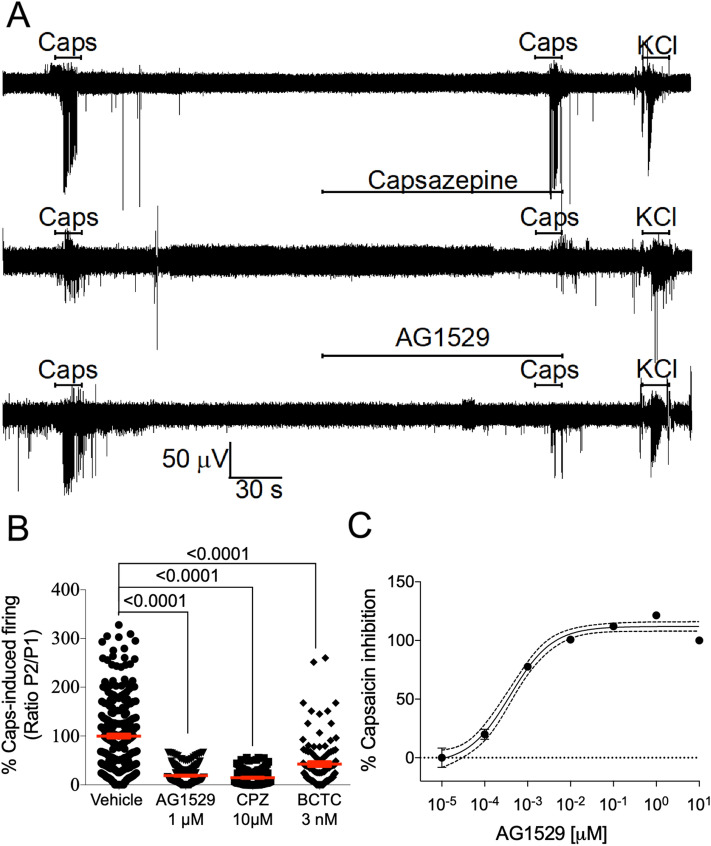Figure 6.
AG1529 attenuates capsaicin-induced nociceptor excitability. (A) Representative MEA recordings showing the capsaicin-evoked AP firing for control (top), 10 µM capsazepine (middle) and 1 µM AG1529 (bottom). Capsaicin (0.5 µM) was applied in two sequential pulses of 15 s interspersed with a washing period. Compounds were added 2 min before the second capsaicin pulse. The protocol was terminated with a 15 s-pulse of 40 mM KCl to ensure viability of neuronal cultures. (B) Normalized capsaicin-induced firing (P2/P1) in the absence (vehicle) and the presence of the antagonists (1 µM AG1529, 10 µM capsazepine, and 3 nM BCTC). (C) Dose–response curve of AG1529 blockade of capsaicin-induced AP firing. Data points were fitted to the Michaelis–Menten isotherm, giving an IC50 value of 0.4 nM (95% CI, 0.3 to 0.6 nM) and an nH of 0.88 (95% CI 0.64 to 1.12). The boundary lines denote the interval confidence of the mean values. Data on panel (B) were analysed using the One-Way Anova (F(3,699) = 140.7, p < 0.0001) followed by the Bonferroni´s post-hoc test, p-values for statistical difference are indicated. N (independent experiments) = 3, number of electrodes 100–250 per condition).

